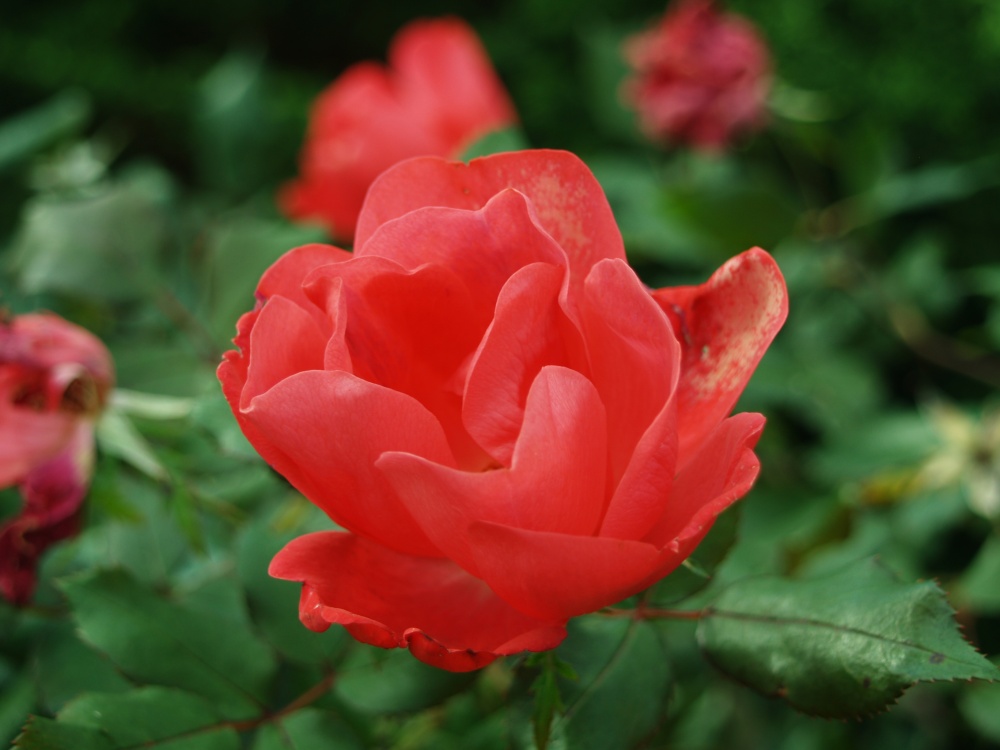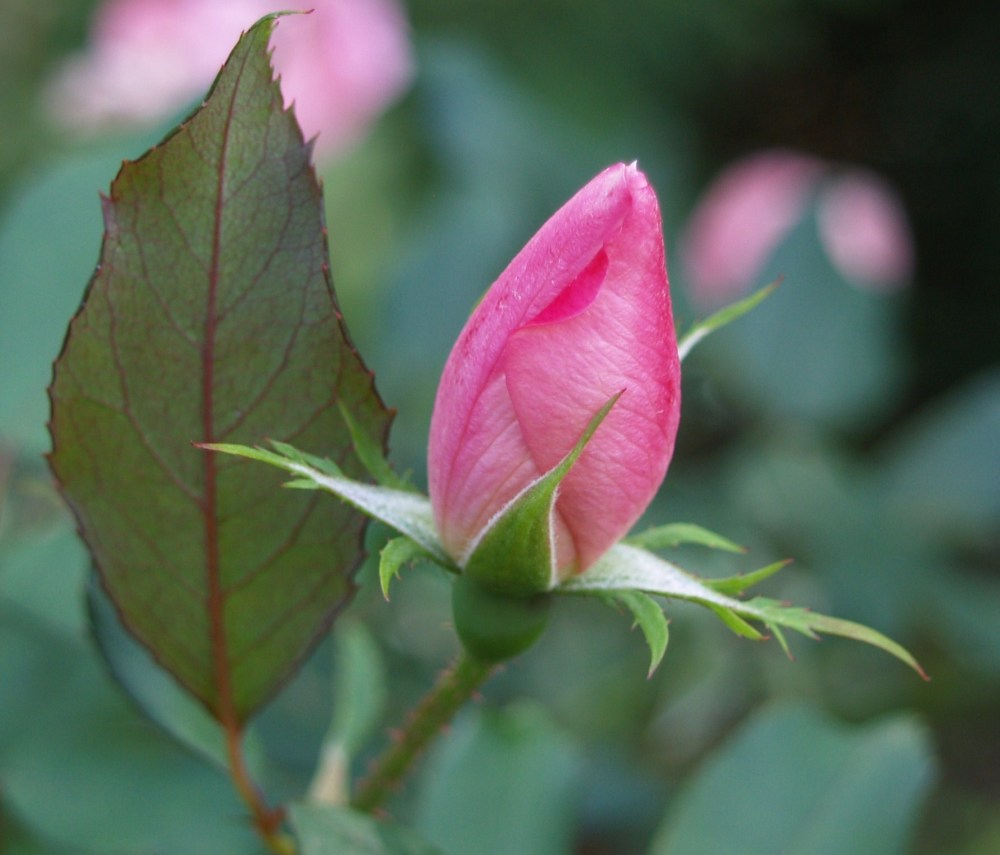In 2008, ‘Rozanne’ geranium (Geranium ‘Gerwat’ Rozanne, below) was declared the perennial of year, and recently I read that voters at Britain’s Chelsea Flower Show selected it as best of the past fifty years. I can’t keep it alive!
And, I don’t think I’m the only one. This seems to be a plant that requires a delicate balance of adequate moisture, well drained soil, and just enough but not too much sun. Perhaps there are places where this exists, but not in my garden. I’ve planted ‘Rozanne’ several times without success, though a few years ago I finally thought I’d figured it out when it lived through two full years, only to disappear over the third winter.
Another geranium, ‘Espresso’ (above) grows wonderfully for me, and it even seeds itself about moderately so that the original plant or two have spread to handfuls. The red-green foliage of ‘Espresso’ remains semi-vigorous through the summer, and the mounded plant stays neat and tidy.
‘Rozanne’ was a slight improvement over ‘Johnson Blue’ that I grew years earlier, but the trailing stems never gained enough body to look like much, and a perennial that quickly fades and disappears is not much to bark about. For the short while it was here, ‘Rozanne’ was a dependable repeat bloomer, which ‘Espresso’ is not, but I’ll take a long lived plant with good foliage that flowers only for a few weeks over an undependable, scrawny repeat bloomer any day. And so, I won’t try ‘Rozanne’ again, no matter how many awards it wins.
Some plants seem cursed in my garden, though it’s likely that the problem is something I’m doing (or not), or the sun or shade, or maybe it’s too wet or dry. I don’t know why ‘Moonbeam’ tickseed (Coreopsis verticillata ‘Moonbeam’, above) won’t grow in my garden longer than a year when it seems to be foolproof for everyone else, but most things do just fine in my garden, so I’m not bothered much when something doesn’t work.
Some plants are just not as good as advertised, which in these days of overblown hype should not be much of a surprise. Over the past decade branded plant breeders have proliferated, and as demand for new and better plants has skyrocketed the number of hastily tested plants that look great but perform poorly has increased. The first one that struck me was the Flower Carpet rose (below), which has been largely abandoned by rose growers because it proved not to be nearly as carefree or as good a grower as the group that introduced it claimed. 
From a handful that I planted when they were first introduced, I have one Flower Carpet remaining, and in early July much of its foliage is spotted and yellowing. It’s just about the time in early summer when I chop it in half so that the weathered and diseased foliage is discarded, and then the new growth stays fairly clean for the rest of the year. This is isn’t how this rose is supposed to perform, and I’m not the only one who’s experienced this problem.
On the other hand, I’ve planted Knockout and Drift ground cover roses in recent years and these perform at least as well as the breeder’s claims. In fact, the Drifts are not doing quite so well now, but I had no good place to plant them so they’re in a spot that’s far too shady for roses. Ones that I planted at my son’s house are doing wonderfully, and I’ve seen enough good things to know that my questionable results are not indicative of their typical performance.
Rose enthusiasts are probably justified in scoffing at Drifts and Knockout roses as too common, since they are produced by the tens and hundreds of thousands. The flowers they produce are not as well formed or fragrant as others, but before their introduction the reputation of roses as high maintenance had driven most gardeners away from planting any roses at all, so introducing ones that don’t require much care is a good thing.
Many recently introduced hydrangeas have proven successful in bringing exceptional plants to gardeners. There are a dizzying number of new varieties, with some indistinguishable except for the name, but reblooming hydrangeas such as Endless Summer (above) have greatly improved on the dependability of flowering in northern gardens where blooming was once spotty, at best. With a bit of cooperation from the weather, I’ll have hydrangeas flowering from May into late October.
Another disappointment has been ‘Bloomerang’ lilac, which manages to eek out a few sporadic blooms, but seems to barely survive even the constant care of the garden center, much less the varied conditions of the garden. Planted alongside ‘Miss Kim’ (above) and ‘Palibin’ dwarf Korean lilac, ‘Bloomerang’ exhibits a notable lack of vigor in the same conditions where the others thrive, and the sparse blooms cause you to wonder why this was introduced. I’m hoping it doesn’t end up on somebody’s “best of” list.
Sorry,….But I totally disagree with your review of Geranium ‘Rozanne’. I have literally probably planted over 3000 # 1 gal plants in the past 3 years. 95% of them flourish and thrive (the 5% that die are usually mechanical or plant maintenance issues) and provide endless purple color from June through Oct. into early November. Soil prep is key, don’t let the plants dry out, get them established and they pretty much survive on their own. Most sites I have used Geranium ‘Rozanne’ in combination with Drift Roses and the effect is specular. I have people calling my nursery asking what type of purple flowers are planting in front building X. And most sites which I have planted G. Rozanne, have been commercial sites, the true test of plants durability to survive in on a commercial property!!!
I was fortunate enough to meet and discuss Geranium ‘Rozanne’ with Adrian Bloom (renowned gardener and introducer of Geranium ‘Rozanne’) at his home & gardens in Norfolk, England, during a recent visit. We both concluded that” its the greatest thing sliced bread”! Please don’t give offer such scathing opinions, if you only have trailed plants in your yard alone.
Dave Resavage
Landscape Designer/Estimator
Hanover Nursery
Wilkes-Barre, Pa.
Zone 6b
I’m sorry, but I must disagree. Our landscape company plants a thousand or more Rozanne each year, with mediocre to poor success. Certainly, not every plant dies, but too significant a number in comparison with other perennials. I am very aware (such as with the Drift roses and coreopsis in my garden) when my experiences are out of the norm, but I often notice on gardeners’ blogs that Rozanne is a particularly troublesome plant for them, so I am certain that my experiences are not unique.
Dave, what zone are you gardening in???? just curious…… Perhaps if your further south it could be compromising the plants ability to thrive.
I have to agree, about “Bloomerang Lilac” That plant is a complete and utter failure and should be pulled off the market! I did a mass planting with said plant ( I didn’t trial it first and trusted the hype) ……. it was a disaster, everyone had to be replaced.
Best,
Dave Resavage
Landscape Designer/Estimator
Hanover Nursery
Wilkes-Barre Pa.
Zone 6b
In northern Virginia we’re a zone 7, but of course recent years have been warmer. I suspect the problem is more with the poorly drained clay soil than cold or lack of. Rozanne could live up to its billing in some parts of the country, but I see and hear too many complaints about it.
The problem with Bloomerang seems to be inadequate testing by the breeder (Proven Winners). Growing nurseries and consumers have a problem with it, which seems to me an intolerance for dampness, even above ground in containers with bark soil mix.